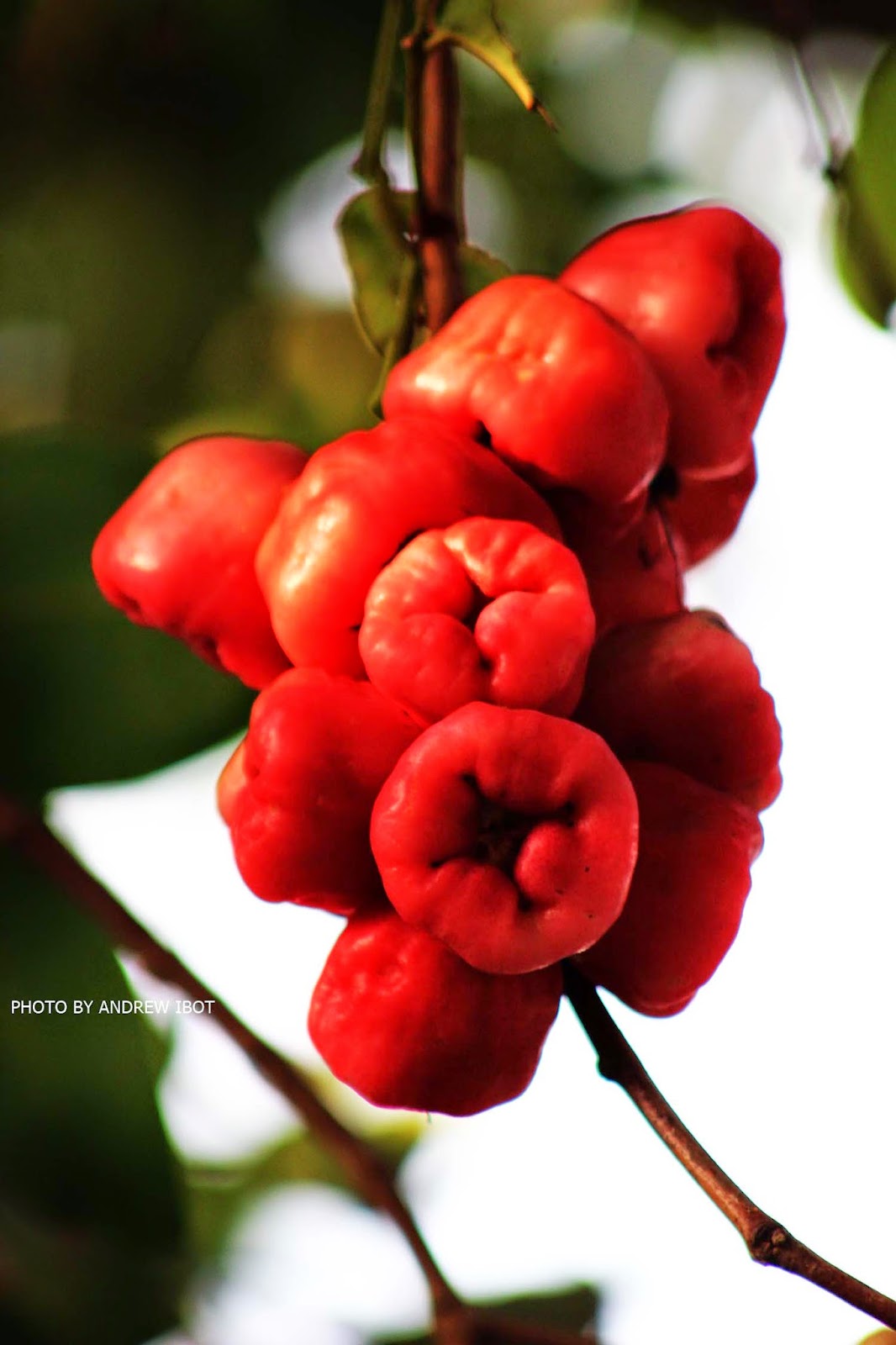 Makopa is a bell-shaped and pinkish edible fruit that grows in tropical areas. It grows from an evergreen tree of the species Syzygium samarangense.
Makopa is a bell-shaped and pinkish edible fruit that grows in tropical areas. It grows from an evergreen tree of the species Syzygium samarangense.
The tree grows in tropical lowlands and is commonly found in Taiwan, Southeast Asia and Oceania. The fruit is greenish white when unripe and pinkish to red when ripe. It can be eaten fresh or as part of a delicacy such as fruit salad.
Commonly known as makopa in the Philippines, it is also known by a variety of other names in the regions where it can be cultivated. It is know as jambu klampok in Indonesia, chomphu-khieo in Thailand and roi in Vietnam. It is known in English as wax apple, Java apple and water apple. Its scientific name is Syzygium samarangense.
The tree grows in tropical climate on lowlands up to 1200 m above sea level. The trees grow up to 5 to 15 m in height and must be planted with 8 to 10-meter space between adjacent trees. It requires steady supply of water and are usually planted near bodies of water such as streams or ponds. It can also be cultivated in home gardens and along driveways.
The makopa fruit is 7.5 to 10 cm in diameter. In planting makopa, the seeds tend to lose their viability quickly and must be planted immediately after removing it from the fruit.
The fruit is typically eaten fresh including the skin just like eating apples and grapes. It can also be sliced and mixed in a fruit salad. It can also be preserved by pickling.
Commonly known as makopa in the Philippines, it is also known by a variety of other names in the regions where it can be cultivated. It is know as jambu klampok in Indonesia, chomphu-khieo in Thailand and roi in Vietnam. It is known in English as wax apple, Java apple and water apple. Its scientific name is Syzygium samarangense.
The tree grows in tropical climate on lowlands up to 1200 m above sea level. The trees grow up to 5 to 15 m in height and must be planted with 8 to 10-meter space between adjacent trees. It requires steady supply of water and are usually planted near bodies of water such as streams or ponds. It can also be cultivated in home gardens and along driveways.
The makopa fruit is 7.5 to 10 cm in diameter. In planting makopa, the seeds tend to lose their viability quickly and must be planted immediately after removing it from the fruit.
The fruit is typically eaten fresh including the skin just like eating apples and grapes. It can also be sliced and mixed in a fruit salad. It can also be preserved by pickling.





















No comments:
Post a Comment